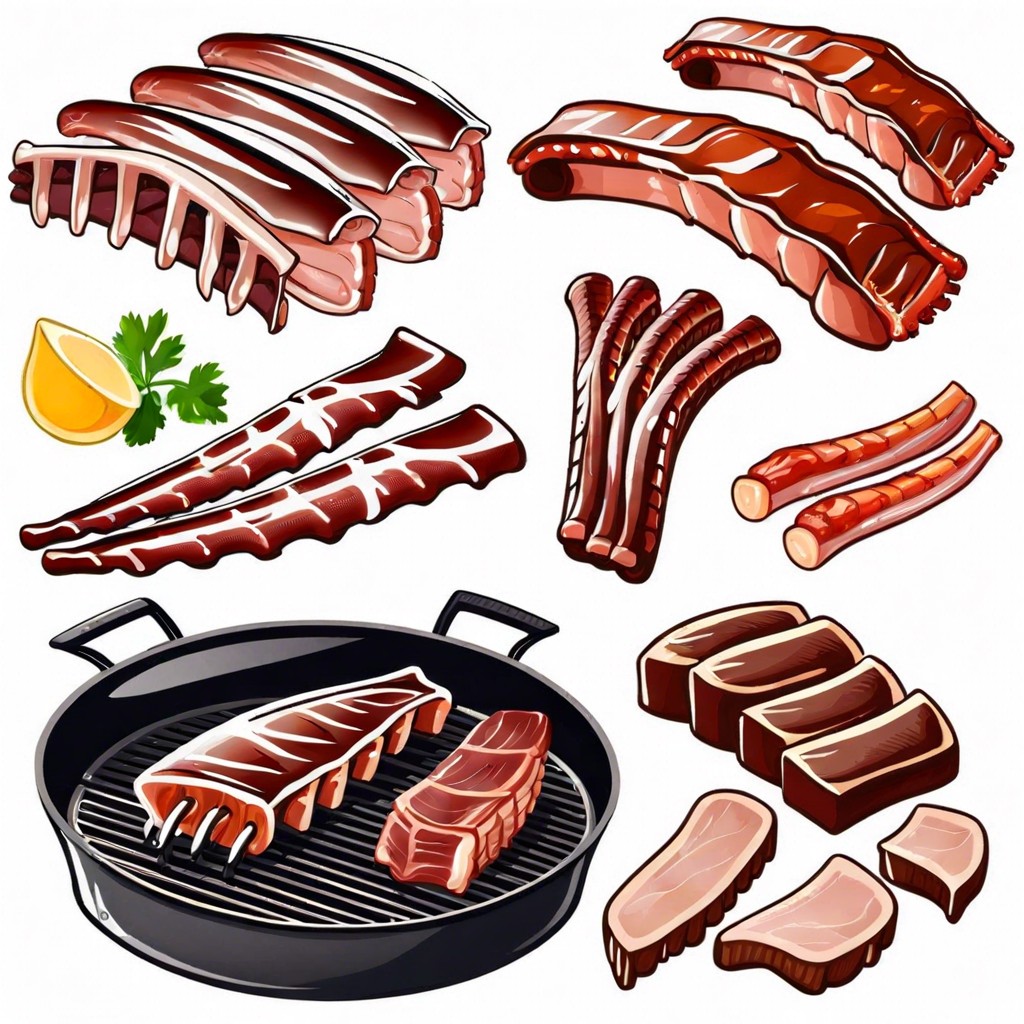Learn how to master the technique of grilling ribs to perfection by understanding the process, selecting the right type of ribs, and employing strategies for maintaining consistent heat and moisture.
Key takeaways:
- Choose the right type of ribs based on meatiness and cooking time.
- Trim excess fat and remove the tough membrane before grilling.
- Set up your grill for indirect heat to cook ribs slowly and evenly.
- Use the 3-2-1 method for tender, fall-off-the-bone ribs.
- Check for doneness using the bend test and internal temperature.
Choosing Ribs for the Grill

Select from baby back, spare, or St. Louis-style ribs based on desired meatiness and cooking time. Baby backs are leaner and quicker to cook, preferred for a shorter grilling session. Spare ribs offer more meat and fat, resulting in richer flavor, while St. Louis-style presents a happy medium with a uniform, rectangular shape that promotes even cooking.
For optimal results, choose ribs with a good balance of meat to fat and ensure the rack is not too thick, which could affect cooking time and create challenges in achieving an even cook through to the bone. Opt for ribs with a pinkish-red hue, avoiding any with a dull color or slimy texture.
Prior to purchase, verify the packaging is intact and the sell-by date indicates freshness.
Preparing the Ribs: Trimming and Removing the Membrane
Before ribs meet the grill, a small amount of prep will ensure they’re tender and flavorful.
Start by trimming any excess fat and loose meat—this promotes even cooking.
A critical, often overlooked step is to remove the silver skin, a tough membrane on the bone side.
Peel it away with a paper towel for better seasoning penetration and texture.
This prep not only enhances the eating experience but also allows rubs and smoke to permeate the meat more effectively.
Remember, the cleanest ribs will yield the best results on your grill.
Setting Up Your Grill for Indirect Heat
Success with ribs on the grill pivots on mastering the art of indirect heat. This technique involves placing the ribs away from the direct flame, allowing them to cook slowly and evenly, infusing them with smoky flavor without charring.
For charcoal grills, arrange coals on one side of the grill, creating a hot zone and a cooler zone. Place your ribs on the grate over the cooler side, ensuring they’re not directly above the coals.
Gas grill enthusiasts can achieve indirect heat by lighting burners on one half of the grill to a medium heat while leaving the other half off. Ribs should be placed on the unlit side, again to avoid direct heat.
In both cases, the lid is crucial; it acts as a convection oven lid, circulating heat throughout the grill. Use a grill thermometer to maintain a consistent temperature around 225-250 degrees Fahrenheit – the sweet spot for cooking ribs to tender perfection.
The 3-2-1 Method for Smoking Ribs On a Grill
The 3-2-1 method is a time-tested technique to ensure tender, fall-off-the-bone ribs. Initially smoke the ribs directly on the grates for three hours, allowing the smoke to permeate the meat. After this initial smoking phase, wrap the ribs in foil with a splash of liquid, like apple juice, to steam and tenderize the meat for two hours.
For the final hour, remove the foil, allowing the exterior to develop a caramelized exterior. During this last stage, you can apply sauces if desired, to add a sticky, sweet layer. This step is crucial since a flavorful crust often defines exceptional ribs.
Keep a close eye on the ribs to prevent burning and to guarantee a succulent result.
Checking for Doneness: The Bend Test and Internal Temperature
Expert pitmasters often rely on tactile and visual cues to assess rib readiness, with the bend test being a popular method. Lift the slab of ribs with tongs at one end; a perfect doneness presents itself when the ribs bend at a 45-degree angle and the meat starts to crack on the surface. This indicates a tender structure that still holds together but is moments away from falling off the bone.
For enthusiasts desiring precision, a digital meat thermometer brings science to the forefront. Aim for an internal temperature between 190-203°F measured at the thickest part. Remember, the collagen within the ribs transforms into succulent gelatin at around 180°F, bestowing the desired texture for classic grilled ribs. However, avoid hitting the bones with the probe as this could result in a false high reading.
In summary, employing a combination of the bend test and accurate temperature readings ensures ribs are cooked to perfection.